I'm working on plugin in QGIS which is creating 3d model from raster data. In that case, I need to create triangulation only in the vertical plane (no connecting vertical faces with neighbour points).
This is my code and example with the current effect.
def delaunay_ogolny(self):
import math
X=[]
Y=[]
Z=[]
for x in self.listqa:
dada=x[0]
X.append(dada)
uu=x[1]
Y.append(uu)
dede=x[2]
Z.append(dede)
u = np.array(X)
v = np.array(Y)
x = u
y = v
z = np.array(Z)
#Delaunay
tri = Delaunay(np.array([u, v]).T,qhull_options="QJn") #,furthest_site=True #i put there QJn option
#tri=Delaunay(self.listqa)
self.faces = []
self.points = []
for vert in tri.simplices:
self.faces.append([vert[0], vert[1], vert[2]])
#print(self.faces)
for i in range(x.shape[0]):
self.points.append([x[i], y[i], z[i]])
#print(self.points)
return self.faces, self.points
After Delaunay function I create stl file from points and faces. Below is what I need but the algorithm only works properly when I got one straight line. I need it for all points.

EDIT1: @Ripi2
I tried your idea but it didn't work.
This is my code of iterating function where I iterate through all pixels and when the pixel have got value, my algorith add it to the list. After that I use this list in Delaunay triangulation.
This is the code:
def iterator_shape(self):
#selectedLayerIndex = self.dlg.comboBox.currentIndex()
path=os.path.join(r'default\python\plugins\print_your_3d\TRASH\shape_to_raster.tif')
layer = iface.addRasterLayer(sciezka, "qtaz")
provider = layer.dataProvider()
extent = provider.extent()
rows = layer.height()
cols = layer.width()
block = provider.block(1, extent, cols, rows)
xmin = extent.xMinimum()
ymax = extent.yMaximum()
xsize = layer.rasterUnitsPerPixelX()
ysize = layer.rasterUnitsPerPixelY()
k=1
xinit = xmin + xsize / 2
yinit = ymax - ysize / 2
self.listqa = []
for i in range(rows):
for j in range(cols):
x = xinit + j * xsize
y = yinit
k += 1
if block.value(i, j) == -3.4028234663852886e+38:
continue
elif block.value(i,j)>=self.dlg.doubleSpinBox.value():
self.listqa.append([x, y, block.value(i, j)])
self.listqa.append([x,y,block.value(i,j)-1])
self.listqa.append([x,y+0.01,block.value(i,j)-1]) # @Ridi2 you mean that?
xinit = xmin + xsize / 2
yinit -= ysize
return self.listqa
This is example of raster which i would like to convert to 3d STL MODEL. 1 pixel have got X,Y and elevation value ( in code this is block.value)

Edit2:
I need to make faces between that.
This is better visualization made in ArcScene.
